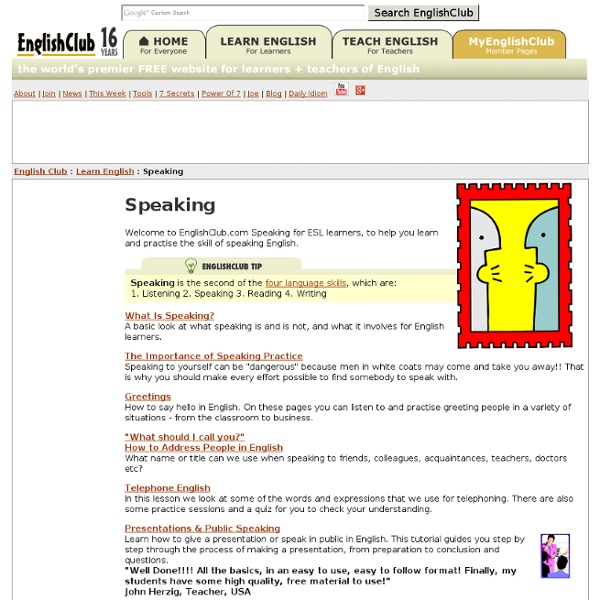Speaking Activities
On these pages you will find ideas for classsroom activities which involve speaking. (These tips are taken on this site · Find the murderer · Bingo mingle · Short projects to get them talking - Lists · Superlative questions
Reading Comprehension Worksheets
"Your reading comprehension materials are the best I've found on the web. They are so thorough and comprehensive! My students and I have learned a lot from them. Thanks so much!"
Video Lesson: Mr. Bean
Follow me on twitter This is a video lesson based around the video “Mr. Bean packs his suitcase” thanks to British Council for bringing it to my attention in their lesson plan on making predictions but I’ve adapted it for use in different ways with different levels. Kids and lower levels The aim of this lesson plan is to practice holiday vocabulary (clothes and items that go in a suitcase) and some basic grammar structure.
Conversation Questions for the ESL/EFL Classroom
If this is your first time here, then read the Teacher's Guide to Using These PagesIf you can think of a good question for any list, please send it to us. Home | Articles | Lessons | Techniques | Questions | Games | Jokes | Things for Teachers | Links | Activities for ESL Students Would you like to help? If you can think of a good question for any list, please send it to us.
English songs for ESL kids
english songs for kids Kids love songs! Singing traditional kids' songs can be a great and fantastic way to teach English to young learners. With the help of amusing, easy to remember songs they learn new words, expressions and pronunciation quickly, and have fun at the same time. Here you will find a small collection of the most popular English songs for kids and Christmas carols. Choose your favourite one, then listen and sing!
Super Teacher Worksheets
STW Filing Cabinet Logged in members can use the Super Teacher Worksheets filing cabinet to save their favorite worksheets. Quickly access your most commonly used files AND your custom generated worksheets! Please login to your account or become a member today to utilize this helpful new feature. :) [x] close This document has been saved in your Super Teacher Worksheets filing cabinet.
How to get your students to speak 100% English
by David Martin This paper is written primarily for teachers who have unmotivated to semi-motivated students and want (more than anything) for their students to communicate in English from the beginning of the lesson right through to the end. This would typically include most university, junior college and high school teachers in Japan. Your first reaction may be that this is an unrealistic goal, one that you may have presented to your students before, but a goal they have always failed to achieve. You may be in a classroom situation where the students speak 20-50% Japanese.
Online language practice community by Rosetta Stone
RWorld: Online Language Practice RWorld is an online community where you can practice your language skills. In RWorld, you'll be completely immersed in your new language in a social environment filled with fun, interactive activities. Communicate and connect with native and advanced speakers to enhance your conversational skills in the language of your choice.
Sing-along Songs
One of the most fun group participation activities for family and friends is to engage in sing-along songs. The essence of a sing-along song is that it has a simple enough melody and memorable lyrics for everyone to easily learn. Many of these popular songs have been around for over a century and are taught to children as part of their grade school music education.
How to Write a Short Story (with Sample Stories
Steps Part 1 Brainstorming Ideas
Using Silent Video in the EFL Classroom
This video is the BOMB! It is captivating, absorbing, a story par excellence but also SILENT! Yes, silent films are great for getting students to produce language — and after all is said and done, that most often is the hardest thing to do, getting the students speaking and learning language by just communicating. That is our job, to get the students so absorbed in the communicative act that they forget they are learning. When we forget and are not consciously fixated on the language – we learn so much more!
How to Come Up with Good Conversation Topics (with Sample Topics)
Expert Reviewed Four Parts:Learning About Basic Conversation StartersExtending the ConversationPushing BoundariesConversation HelpCommunity Q&A Even if you're good with people, there are likely times when you're stuck for something more to say and start wondering what topic to bring up next.



